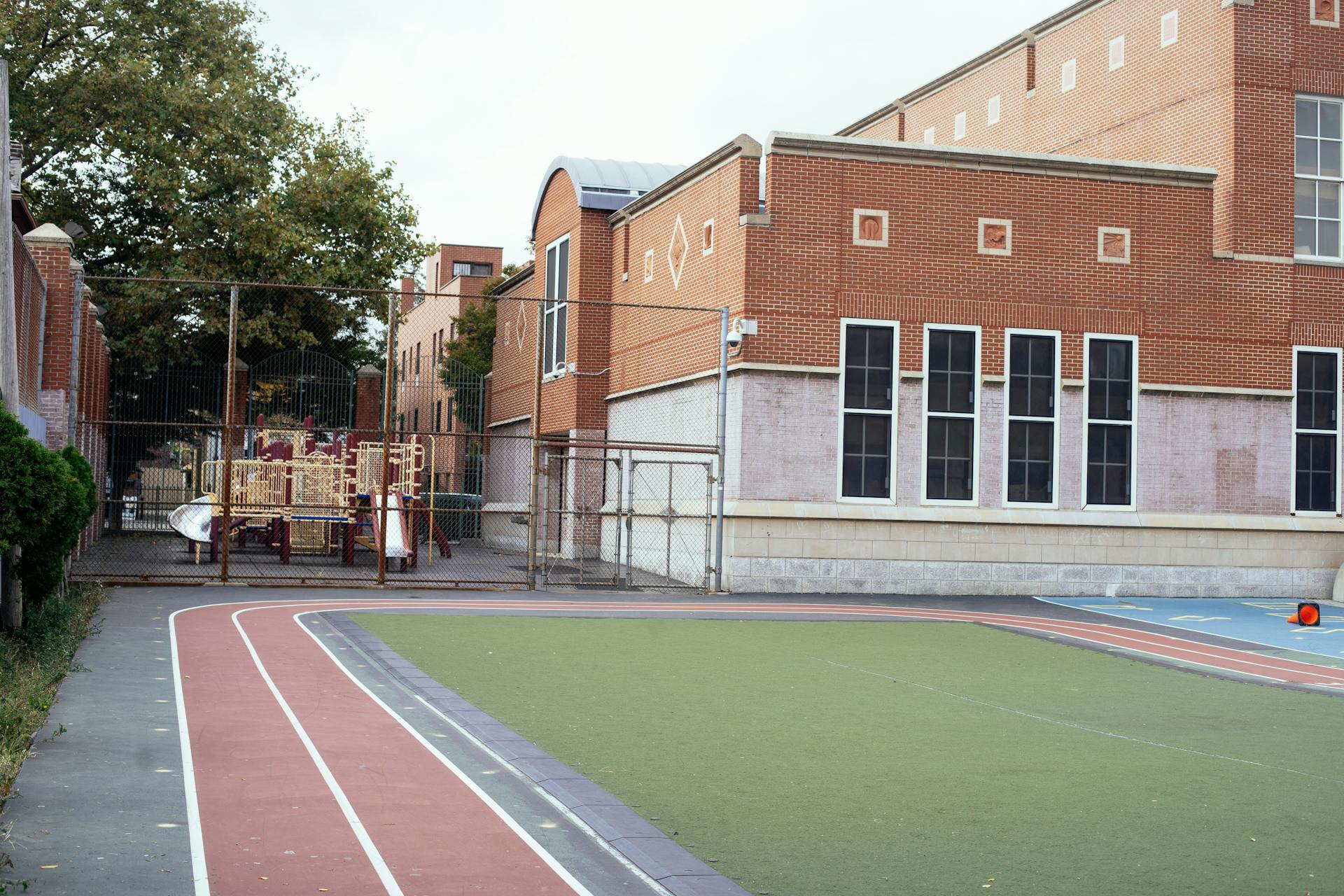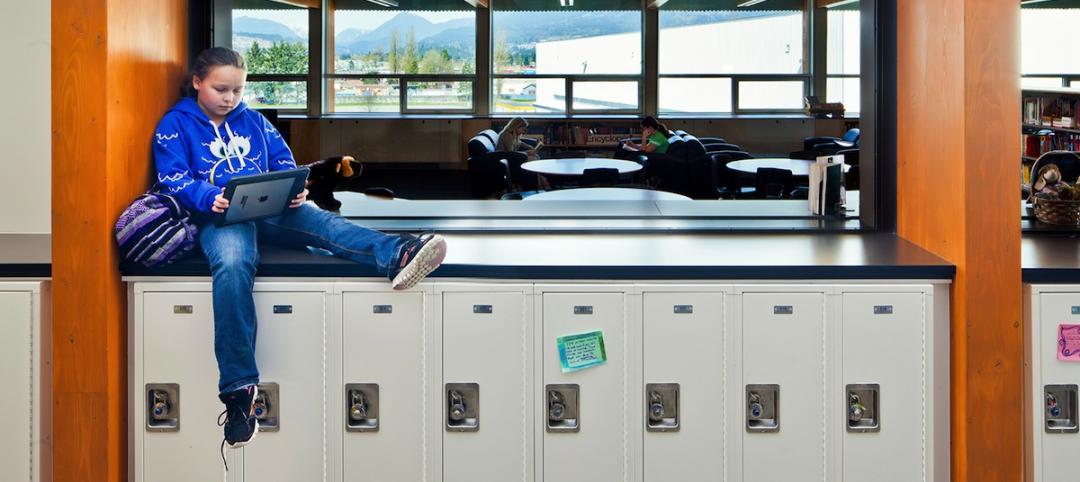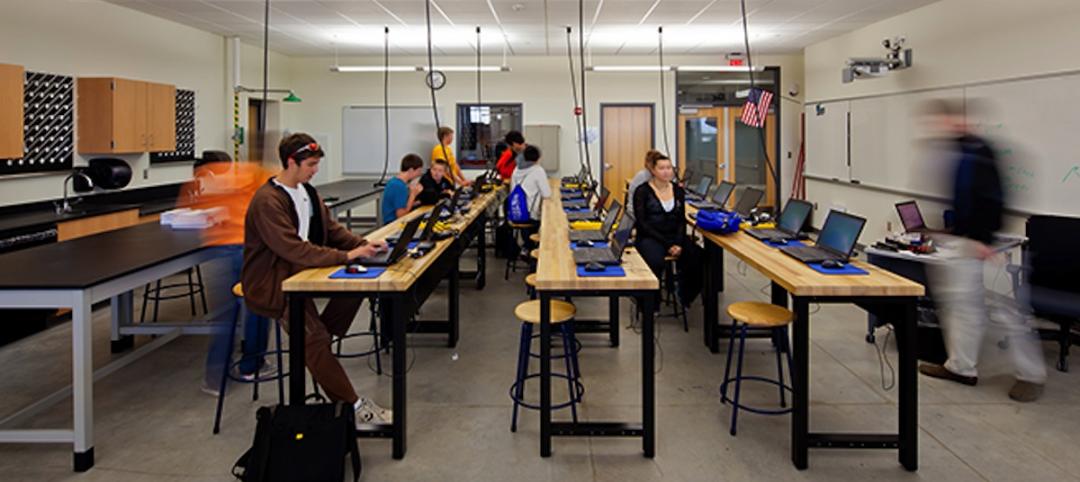The average age of a main instructional school building in the United States is 49 years, according to a survey by the National Center for Education Statistics (NCES).
About 38% of schools were built before 1970. Roughly half of the schools surveyed have undergone a major building renovation or addition. Of those that have been renovated, the average age of the renovation was 14 years.
Major repair, renovation, or modernization work was being performed in 21% of all public schools surveyed as of December 2023. Indoor air quality is a major focus for many schools, with 39% having an indoor air quality coordinator on campus. This position is responsible for monitoring air quality conditions at the school and reporting air quality issues and complaints.
Some 60% of schools have designated vehicle loading and unloading areas at least 25 feet from all building air intakes, including doors and windows. Eighteen % of schools have an anti-idling program that includes signage and active monitoring during pick-up and drop-off times.
Some 31% of public schools have one or more non-permanent (portable) buildings in use.
Here are other findings from the NCES public school building survey:
The average age of the main instructional building is 49 years old. The following %ages of reporting public schools’ main instructional buildings were built during the following time periods:
- Pre-1970: 38%
- 1970 – 1999: 21%
- 2000 – present: 20%
Nearly all public schools (93%) reported having some kind of athletic amenities on-site. The most commonly reported types of facilities were:
- A gymnasium (69%)
- All-purpose grass field (68%)
- Outdoor basketball court (56%)
- Baseball/softball field (38%)
- Weight room (29%)
- Outdoor track (28%)
Most public schools have dedicated library space available (89%).
Compared to the national estimate (89%), higher percentages of public schools with the following characteristics reported having dedicated library space available:
- With 500-999 students (96%)
- With a student body made up of 0-25% students of color (96%)
- In rural areas (94%)
- With 300-499 students (93%)
- Elementary schools (93%)
- In low-poverty neighborhoods (92%)
Compared to the national estimate (89%), lower percentages of public schools with the following characteristics reported having dedicated library space available:
- In cities (84%)
- In high-poverty neighborhoods (81%)
- With a student body made up of 76% or more students of color (80%)
- High/secondary schools (80%)
- With 0-299 students (77%)
Related Stories
K-12 Schools | May 12, 2015
Bjarke Ingels completes Danish high school sports and arts expansion
By placing parts of the new building beneath the football fields, the students are able to walk through the sunken sports hall at the center of the school´s courtyard to the classrooms, cafeteria, and out to the main entrance at street level.
Sponsored | | May 11, 2015
Fire-rated glass separation helps merge new and old pools into a single connected aquatics center
Clear fire-rated glazing helps create a light-filled, safe space for student athletes and spectators in Niles, Illinois.
K-12 Schools | Apr 28, 2015
How to create an environment where students want to succeed
According to a 2014 Gallup poll, our school system not only kills children’s creativity, but also takes its toll on their motivation, writes Perkins+Will's Tinka Rogic.
K-12 Schools | Mar 22, 2015
Budget woes may lead to moratorium on school projects in Alaska
The bill would suspend 70% cost reimbursement from state to localities.
K-12 Schools | Mar 18, 2015
The new Vo-Tech: Transforming vocational workshops into 21st century learning labs
It’s no secret: the way students learn today is different. But facilities are adapting to the increasing demands of technology, collaborative learning, and project-based instruction.
Retail Centers | Mar 10, 2015
Retrofit projects give dying malls new purpose
Approximately one-third of the country’s 1,200 enclosed malls are dead or dying. The good news is that a sizable portion of that building stock is being repurposed.
K-12 Schools | Mar 2, 2015
BD+C special report: What it takes to build 21st-century schools
How the latest design, construction, and teaching concepts are being implemented in the next generation of America’s schools.
Codes and Standards | Mar 2, 2015
Nevada moves to suspend prevailing wage rules on school projects
The Nevada Senate approved a bill that would suspend prevailing wage rules on school projects.
K-12 Schools | Mar 1, 2015
Are energy management systems too complex for school facility staffs?
When school districts demand the latest and greatest, they need to think about how those choices will impact the district’s facilities employees.
K-12 Schools | Feb 26, 2015
Should your next school project include a safe room?
Many school districts continue to resist mandating the inclusion of safe rooms or storm shelters in new and existing buildings. But that may be changing.

















